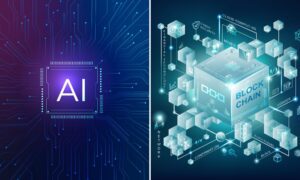In today’s interconnected digital landscape, the importance of IT security cannot be overstated. From personal data to corporate secrets, countless valuable assets are stored and transmitted over networks every day. However, with the rise of cyber threats and attacks, it’s crucial to understand the scope and impact of IT security measures. This article aims to delve into the depths of IT security, exploring its significance, challenges, and strategies for safeguarding valuable information.
The Significance of IT Security
IT security, also known as cybersecurity, encompasses a range of practices, technologies, and processes designed to protect networks, devices, and data from unauthorized access, cyberattacks, and breaches. With the proliferation of digital technologies and the increasing reliance on interconnected systems, the significance of IT security cannot be ignored.
Understanding the Scope of IT Security
The scope of IT security is vast and multifaceted, encompassing various domains, including network security, endpoint security, cloud security, data security, and application security. Each of these domains plays a crucial role in ensuring the overall security posture of an organization.
Network Security
Network security focuses on protecting the integrity, confidentiality, and availability of data as it is transmitted across networks. This includes implementing firewalls, intrusion detection systems, and encryption protocols to safeguard against unauthorized access and cyber threats.
Endpoint Security
Endpoint security involves securing individual devices, such as computers, laptops, smartphones, and tablets, from malware, viruses, and other malicious software. This often entails deploying antivirus software, endpoint detection and response (EDR) solutions, and mobile device management (MDM) tools to mitigate risks and vulnerabilities.
Cloud Security
With the widespread adoption of cloud computing services, cloud security has become increasingly important. Cloud security measures aim to protect data, applications, and infrastructure hosted in cloud environments from cyber threats, data breaches, and unauthorized access. This includes implementing strong authentication mechanisms, encryption protocols, and robust access controls.
Data Security
Data security focuses on protecting the confidentiality, integrity, and availability of sensitive information. This involves implementing encryption, access controls, and data loss prevention (DLP) measures to prevent unauthorized access, data leaks, and breaches. Additionally, data backups and disaster recovery plans are essential components of data security strategies.
Application Security
Application security involves securing software applications and systems from security vulnerabilities and exploits. This includes conducting code reviews, penetration testing, and vulnerability assessments to identify and remediate potential security flaws. Additionally, implementing secure coding practices and regularly updating software patches are essential for maintaining robust application security.
Challenges in IT Security
Despite the importance of IT security, organizations face numerous challenges in effectively safeguarding their digital assets. These challenges include:
Sophisticated Cyber Threats:
Cybercriminals are becoming increasingly sophisticated in their tactics, techniques, and procedures, making it challenging for organizations to defend against evolving threats.
Insider Threats:
Insider threats, whether intentional or unintentional, pose a significant risk to IT security. Employees, contractors, and third-party vendors may inadvertently compromise sensitive information or intentionally engage in malicious activities.
Complexity of IT Environments:
The complexity of modern IT environments, characterized by diverse technologies, platforms, and interconnected systems, makes it difficult to maintain consistent security controls and policies.
Compliance Requirements:
Regulatory compliance requirements, such as GDPR, HIPAA, and PCI DSS, impose stringent obligations on organizations to protect sensitive data and ensure privacy and security.
Resource Constraints:
Many organizations face resource constraints, including budgetary limitations and staffing shortages, which may impede their ability to implement robust IT security measures.
Strategies for Effective IT Security
Despite these challenges, organizations can adopt various strategies to enhance their IT security posture:
Risk Assessment and Management:
Conduct regular risk assessments to identify and prioritize potential security risks and vulnerabilities. Develop and implement risk management strategies to mitigate identified risks effectively.
Security Awareness Training:
Provide comprehensive security awareness training to employees, contractors, and stakeholders to educate them about common security threats, best practices, and policies.
Continuous Monitoring and Incident Response:
Implement continuous monitoring tools and processes to detect and respond to security incidents in real-time. Develop and regularly test incident response plans to ensure an effective response to security breaches.
Multi-Layered Defense:
Adopt a multi-layered security approach that incorporates various security controls, including firewalls, antivirus software, intrusion detection systems, and encryption, to defend against diverse cyber threats.
Regular Updates and Patch Management:
Ensure that all software applications, operating systems, and firmware are regularly updated with the latest security patches and fixes to address known vulnerabilities.
Conclusion
In conclusion, IT security is of paramount importance in today’s digital age, where organizations face an ever-increasing array of cyber threats and risks. By understanding the scope of IT security, addressing key challenges, and implementing effective strategies, organizations can strengthen their defenses and protect their valuable assets from potential harm. Ultimately, investing in IT security is not just a matter of compliance or obligation but a fundamental imperative for ensuring the resilience, integrity, and trustworthiness of digital ecosystems.



































